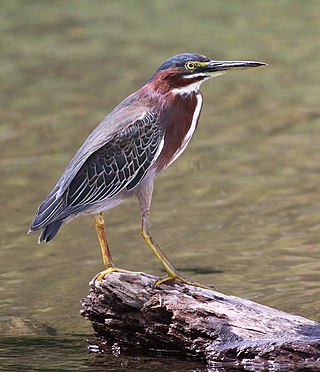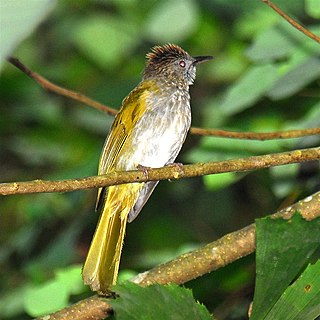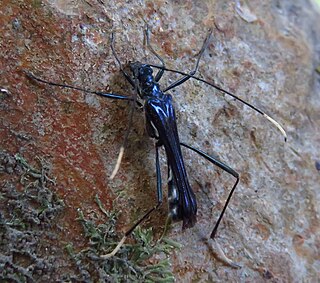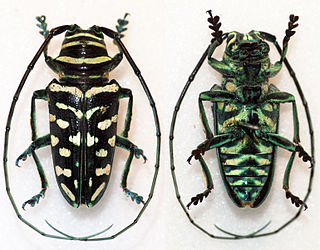
The green heron is a small heron of North and Central America. Butorides is from Middle English butor "bittern" and Ancient Greek -oides, "resembling", and virescens is Latin for "greenish".

Hypsipetes is a genus of bulbuls, songbirds in the family Pycnonotidae. Most of its species occur in tropical forests around the Indian Ocean. But while the genus is quite diverse in the Madagascar region at the western end of its range it does not reach the African mainland.

Ixos is a genus of passerine birds in the bulbul family, Pycnonotidae.

Chloridea virescens, commonly known as the tobacco budworm, is a moth of the family Noctuidae found throughout the eastern and southwestern United States along with parts of Central America and South America.
Pseudotypocerus is a genus of beetles in the family Cerambycidae, containing the following species:

Stenorhopalus is a genus in the longhorn beetle family Cerambycidae. There are about 16 described species in Stenorhopalus, found in Chile and Argentina.

Callidiellum is a genus of beetles in the family Cerambycidae, containing the following species:
Plocaederus is a genus of Long-Horned Beetles in the beetle family Cerambycidae. This genus has a single species, Plocaederus bellator. It is known from the South American countries Brazil, Ecuador, Guyana, French Guiana, Paraguay, and Suriname.

Pronuba is a genus of long-horned beetles in the family Cerambycidae. There are about five described species in Pronuba, found in Central and South America.
Ischnocnemis is a genus of beetles in the family Cerambycidae, containing the following species:

Leptocometes is a genus of beetles in the family Cerambycidae, containing the following species:
Ischnocnemis virescens is a species of beetle in the family Cerambycidae. It was described by Eya in 2010.
Callidiellum virescens is a species of beetle in the family Cerambycidae. It was described by Chemsak & Linsley in 1966.
Leptocometes virescens is a species of beetle in the family Cerambycidae. It was described by Melzer in 1931.
Pericasta is a monotypic beetle genus in the family Cerambycidae described by Elizabeth Schatz Dillon and Lawrence Samuel Dillon in 1952. Its only species, Pericasta virescens, was described by Per Olof Christopher Aurivillius in 1920.
Piola is a genus in the long-horned beetle family Cerambycidae. There are about six described species in Piola, found in the Neotropics.

Sternotomis virescens is a species of beetle in the family Cerambycidae. It was described by John O. Westwood in 1845. It has a wide distribution in Africa. It feeds on Coffea canephora.

Agapostemon virescens, the bicolored striped sweat bee, is a species of sweat bee in the family Halictidae. It is found in North America, and is the official bee of the city of Toronto. Like other species in its genus, A. virescens nests underground, in aggregations wherein multiple females share a single burrow.

Ichneutica virescens, also known as the greater alpine grey, is a moth of the family Noctuidae. It is endemic to New Zealand, and is found in the southern North Island and throughout the South Island. The species is found in alpine, sub-alpine, and down to sea-level in grassland habitats. Adults are on the wing from November through to April. The likely larval host may be grasses, but larvae have been reared on a range of plants. The adults are similar to I. panda, I. falsidica and I. nobilia, but is distinguished by size, wing colouration, and antennae formation.

Clavogaster virescens is a species of secotioid or pouch-like fungus in the family Strophariaceae. It is endemic and indigenous to New Zealand, where it grows on rotting wood in native bush and mixed native and introduced forests. It has a stout yellowish stem, and a powder blue, purplish or greenish blue cap that forms a pouch, often referred to as a peridium, enclosing reddish brown or orange chambered gleba. The species is sometimes known as the "Spindle Pouch".












